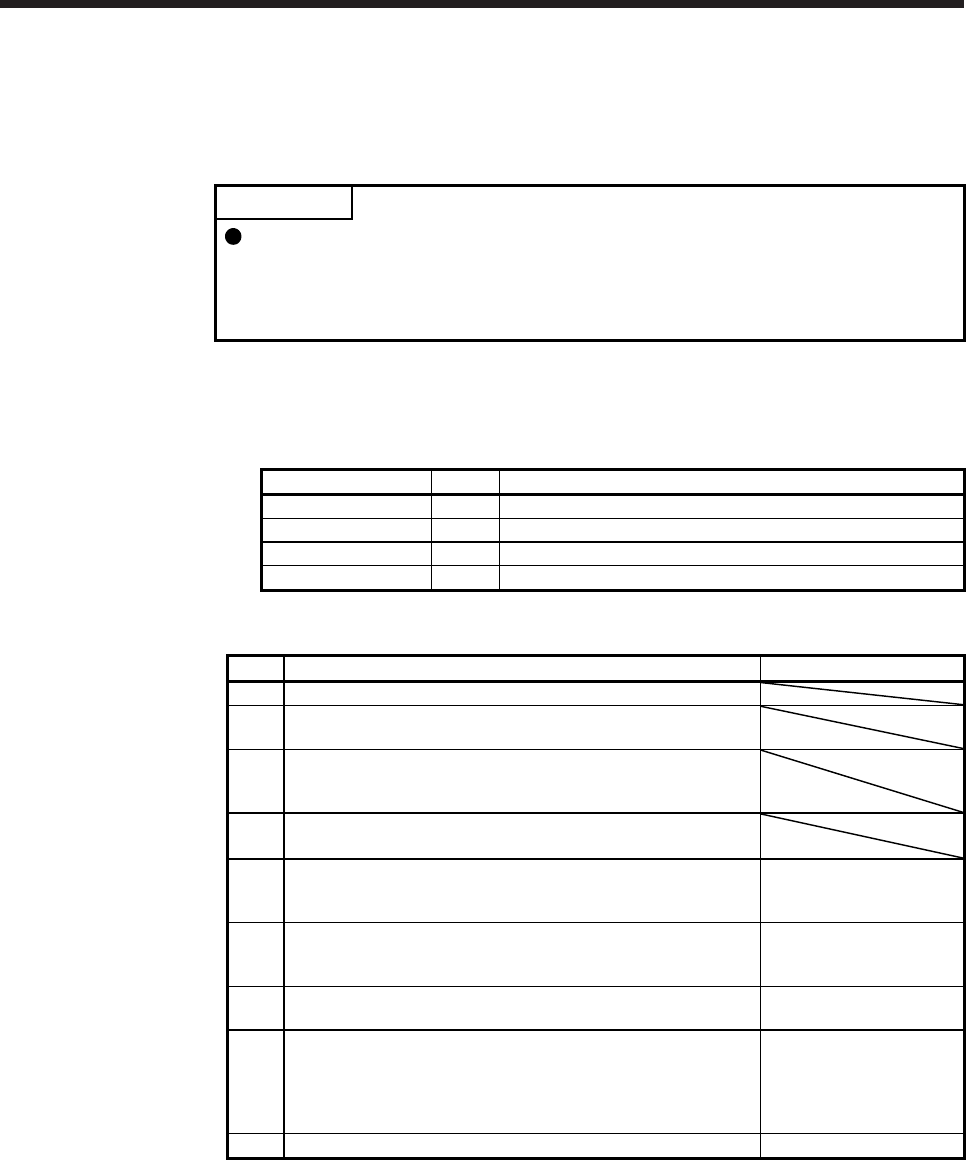
6. NORMAL GAIN ADJUSTMENT
6 - 13
6.4 Manual mode
If you are not satisfied with the adjustment of auto tuning, you can make simple manual adjustment with
three parameters.
POINT
If machine resonance occurs, filter tuning mode selection in [Pr. PB01] or
machine resonance suppression filter in [Pr. PB13] to [Pr. PB16] and [Pr. PB46]
to [Pr. PB51] may be used to suppress machine resonance. (Refer to section
7.1.1 and 7.1.2.)
(1) For speed control
(a) Parameter
The following parameters are used for gain adjustment.
Parameter Symbol Name
PB06 GD2 Load to motor inertia ratio
PB07 PG1 Model loop gain
PB09 VG2 Speed loop gain
PB10 VIC Speed integral compensation
(b) Adjustment procedure
Step Operation Description
1 Adjust gains briefly with auto tuning. Refer to section 6.3.3.
2
Change the setting of auto tuning to the manual mode ([Pr.
PA08]: _ _ _ 3).
3
Set an estimated value to the load to motor inertia ratio. (If the
estimate value with auto tuning is correct, setting change is not
required.)
4
Set a slightly smaller value to the model loop gain.
Set a slightly larger value to the speed integral compensation.
5
Increase the speed loop gain within the vibration- and unusual
noise-free range, and return the gain slightly if vibration takes
place.
Increase the speed loop
gain.
6
Decrease the speed integral compensation within the vibration-
free range, and return the compensation slightly if vibration takes
place.
Decrease the time
constant of the speed
integral compensation.
7
Increase the model loop gain, and return the gain slightly if
overshoot takes place.
Increase the model loop
gain.
8
If the gains cannot be increased due to mechanical system
resonance or the like and the desired response cannot be
achieved, response may be increased by suppressing resonance
with the adaptive tuning mode or machine resonance
suppression filter and then executing steps 3 to 7.
Suppression of machine
resonance
Refer to section 7.1.1 and
7.1.2.
9 While checking the motor status, fine-adjust each gain. Fine adjustment


















